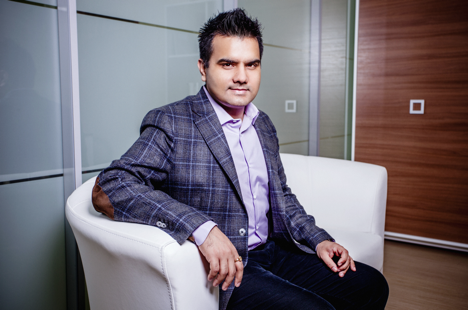Ravi Navlani, President of the Surya Group, an Indian textiles company, spoke about the logistical problems that beset the bilateral textile business in an interview with RIR. He also described the latest trends and spoke of increasing appreciation of natural fabrics among Russian customers.

Has the current economic crisis in Russia inflicted significant damage to the textile market?
“There are still opportunities to increase your market share. During any crisis, the amount of local production grows. So in the textile market all the companies have an opportunity to increase their sales. But it depends on people who are more proactive. You should be brave when everybody is scared and you should be scared when everybody is brave. We are actively looking at increasing our client base and taking a lot of new suppliers to grow our market share. This is our strategy at this moment.”
Indian companies mostly are trading not in Indian clothes but in Chinese, Turkish, Korean, Indonesian. Why?
“Actually this is due to a lack of focus, and people believe that the delivery time from India is rather long. Nobody has explored the Indian market till today in terms of this, and Indian companies haven’t explored the Russian market too. There’s also such a problem as little awareness and lack of proper marketing. The overall consumption of textiles even by Indian companies is not from India, it is from China, Indonesia, etc.”
This year the BRICS and SCO summits are being held in Russia. Do you have any expectations from these events?
“I am very bullish on Russian market. There is a lot of potential over here. It’s just a matter of time. People have to be more long-sighted over here. There’s no point in creating panic. The government should rather focus on increasing or optimising the operations of every company or taking new positions because everything here is at rather targeted positions. Overall, I am quite positive about the bilateral strategic partnership.”
Despite Indian companies’ activities in the Russian market, a significant number of people still prefer to buy Western brands even though they are usually more expensive. Why do you think this is happening?
“I fully believe that there is little awareness over here. It’s only about marketing and focus. We are right now negotiating with some big brands from India that we will be launching in Russia in near future. Unfortunately, I can’t name those brands because I signed a contract. We are closely looking at expanding various segments like apparel. We are focusing on that because there is a great niche over here that can be utilised and which can be leveraged through our market share in Russia.”
What changes and new trends in the Russian textile market have you observed during the recent years?
“In the last one to two years consumers have become more intellectually aware about the material of the garments that they are wearing. Three, four, five, six years ago we used to sell more volumes of polyester and mixed fabrics. And now consumers are more prone to natural fibres and natural fabrics like cotton and cotton mixtures and so on and so forth. The whole tendency is moving towards natural stuff.”
What, in your opinion, are the main problems for Indian businessmen doing business with Russia in the textile sphere?
“I believe it’s because of logistics. For some reasons, in Russia the customs have become very strict. There is bureaucracy due to lack of budget in the customs. Otherwise, there are not many problems.”
Are people buying less in crisis?
“In November-December last year there was a drop in buying. But since January sales started to grow. Maybe people downsized their differences in terms of brands etc. People now buy less luxury brands. They care for buying medium brands, economical brands. People have downgraded their spending in terms of quality of apparel. Much production has been converted in the local production.”